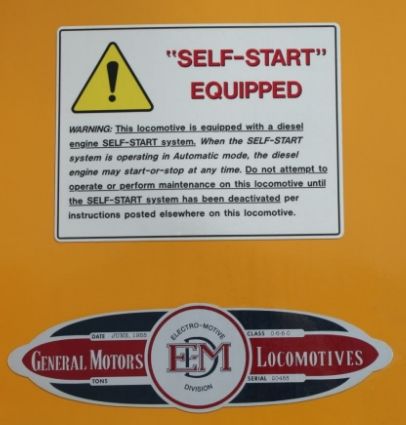The air brakes on a train are a split system…as long as the pressure in the train line and the pressure in the car reservoir system are equal, the brakes remain off.
But drop the pressure in the train line, and the pressure in the reservoir system applies the brakes.
The problem occurs when a train is left un- attended, and air leaks between the two allows the cars reservoir system to leak down, equalizing the two sides of the system and releasing the car brakes.
Leaving the locomotive attached and the compressor charging accomplishes two things…it keeps the main reservoir charges so the next crew can release the brakes by equalizing the train line and the cars, and it keeps the cars reservoir charged so the car brakes remain applied.
NORAC and GCOR rules require and train left standing over four hours without a air supply charging the cars systems must have an initial terminal air brake test performed before it can be moved…this is a long, drawn out procedure requiring inspection of the entire brake system, including rigging, shoes, piston travel and visual inspection of both sides of the cars by a qualified person, twice.
Once with the brakes applied so he (she) can see the brake systems function in the applied position, and once released, so he can see the entire brakes system release…in the field this can take several hours as the rules require 100% of the cars have fully functional brakes…find one bad order in the middle of all this and you pretty much stuck there.
Leaving a locomotive running and charging the system allows for a simple set and release and a air pressure test at the rear, which can be done by most EOT now.
It is also cheaper to burn the fuel than to delay a 120 car train while a service person comes out, and replaces one brake shoe.
That in itself can cost you an entire shift…so you end up paying the service person, the train crew and holding up the train…most likely the crew will die on the hours of service before
